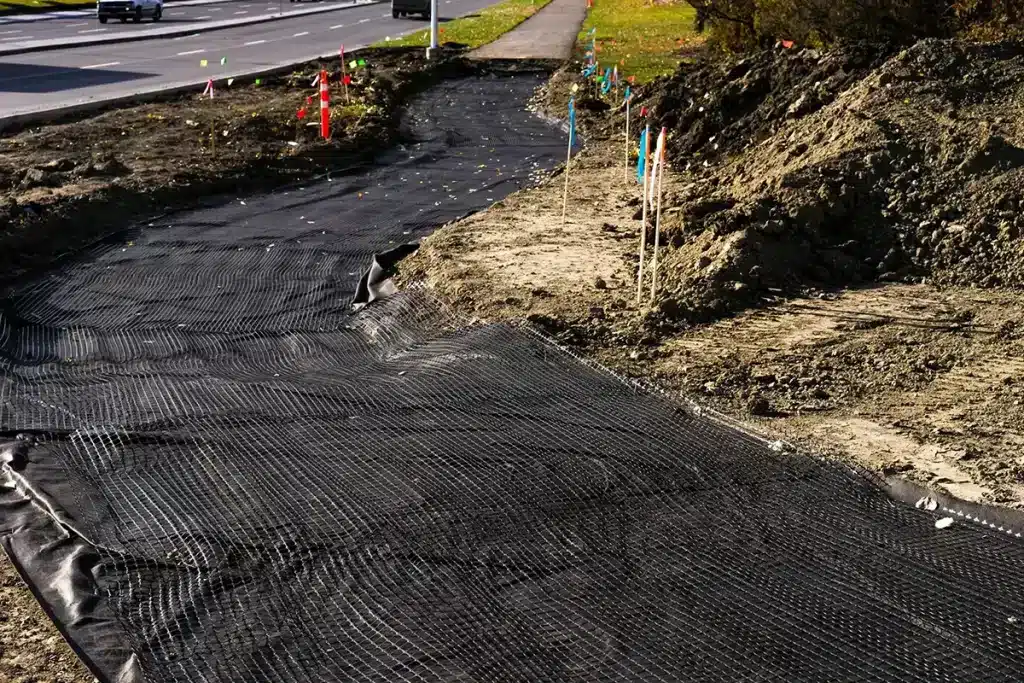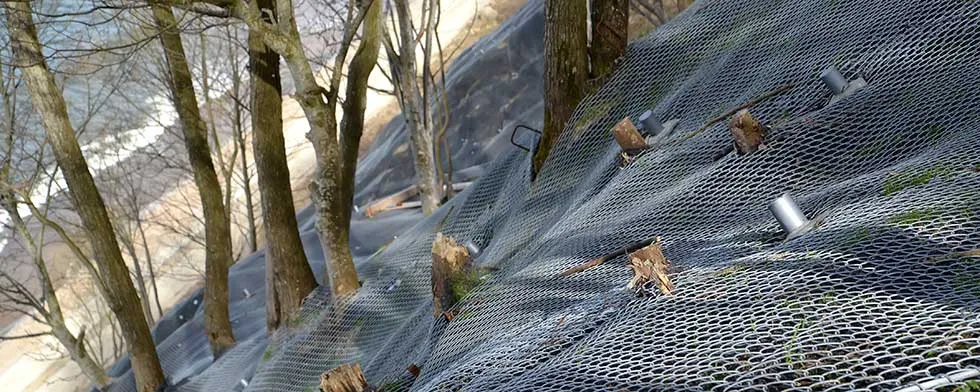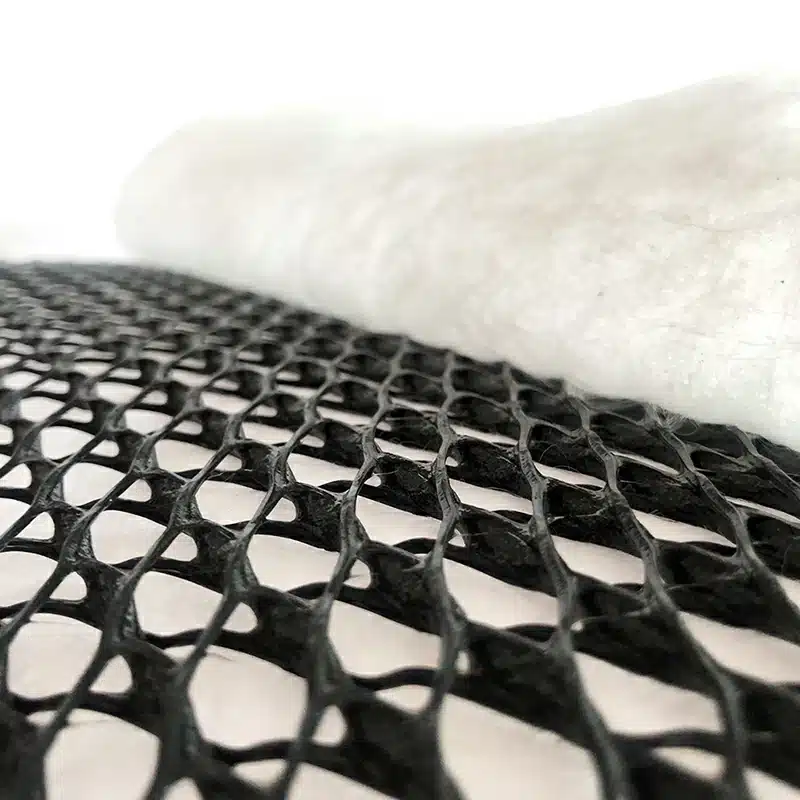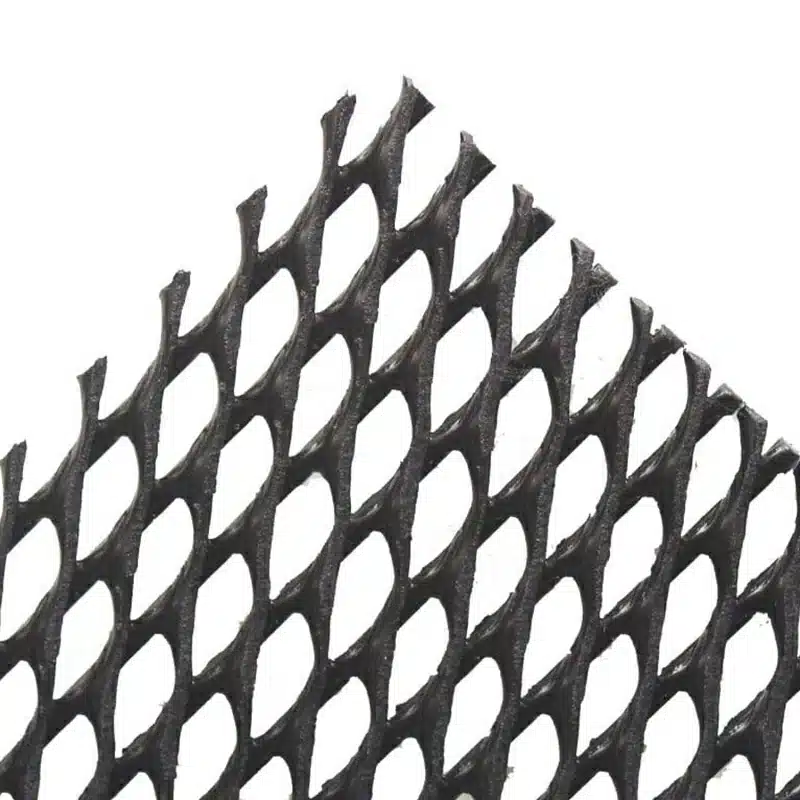+86-159 9860 6917
info@geofantex.com
geofantex@gmail.com
+86-400-8266163-44899
Drain geonet cores are fundamental components in modern drainage systems, offering unique advantages in various construction projects. This article dives into their composition, characteristics, and practical uses, providing insights into their significance within civil engineering applications.

What are drain geonet cores made of and how are they structured?
- Material Composition: Drain geonet cores are primarily made from durable polymers such as high-density polyethylene (HDPE) or polypropylene (PP), chosen for their chemical resistance, strength, and longevity.
- Three-Dimensional Structure: These cores have a 3D net-like grid formed by extruded ribs arranged in diamond or square patterns, creating a strong yet flexible framework.
- Open Channels: The grid design forms interconnected voids or channels that allow for efficient fluid flow and drainage, preventing water accumulation.
- Mechanical Strength: The thick, ribbed structure provides excellent load-bearing capacity and stability, ensuring the geonet can withstand soil pressures and external loads.
- Protection Layers: Drain geonet cores are usually sandwiched between geotextile fabrics, which filter out soil particles while allowing water to pass, maintaining system functionality.
- Versatility: The combination of materials and structure makes drain geonet cores ideal for various drainage applications in civil engineering, landscaping, and environmental projects.
What are the functions and benefits of drain geonet cores in drainage systems?
Drain geonet cores play a crucial role in drainage systems by offering several functions and benefits:
- Water Management: Geonet cores facilitate the efficient flow of water within drainage systems. They act as a drainage layer, allowing water to move away from the area and preventing waterlogging, which can lead to soil erosion or structural damage.
- Soil Stabilization: These cores help in stabilizing the soil by preventing the buildup of excess water. By maintaining optimal moisture levels, geonets contribute to preserving the structural integrity of the soil, reducing the risk of landslides or subsidence.
- Filtration and Separation: Geonets often have filtration properties that enable them to separate different soil layers or materials within the drainage system. They prevent soil particles from clogging the drainage paths, ensuring the system’s long-term effectiveness.
- Erosion Control: By managing water flow and preventing excessive moisture buildup, geonet cores contribute significantly to erosion control. This is particularly important in areas prone to erosion, such as slopes or embankments.
- Load Distribution: In some cases, geonet cores are used to distribute loads evenly within a drainage system. They help in preventing localized stress points, thereby enhancing the durability and longevity of the system.
- Environmental Benefits: Efficient drainage systems utilizing geonet cores can have environmental benefits by reducing waterlogging, maintaining soil quality, and preventing pollutants from leaching into the surrounding environment.

Where are drain geonet cores typically used in industries or projects?
Drain geonet cores are commonly used in various industries and projects where drainage and filtration are essential. Some common applications include:
- Civil Engineering and Construction: Geonet cores are used in civil engineering projects like roads, railways, retaining walls, landfills, and tunnels to provide drainage and erosion control.
- Landfills and Environmental Projects: They help in controlling leachate collection and prevent clogging of drainage systems in landfills. Geonet cores also aid in environmental projects by managing water flow and preventing soil erosion.
- Infrastructure Development: In infrastructure projects such as highways and airports, geonet cores facilitate efficient drainage to prevent water accumulation that could compromise the stability of the structures.
- Agriculture and Landscaping: Geonet cores are utilized in agricultural drainage systems to manage excess water and prevent soil erosion. In landscaping, they aid in subsurface drainage for sports fields, gardens, and parks.
- Mining and Oil Industry: In mining operations, these cores assist in managing water runoff and preventing erosion. In the oil industry, they are used for controlling fluids and managing drainage in oil fields.
- Geotechnical Engineering: Geonet cores play a crucial role in geotechnical applications, providing drainage pathways in areas with high groundwater levels, preventing hydrostatic pressure buildup behind retaining structures, and aiding in slope stabilization.
What factors are crucial when installing and maintaining drain geonet cores?
During installation, ensuring proper placement and alignment of the geonet cores is crucial for optimal performance. Additionally, regular inspection for any potential blockages or damages and timely maintenance to clear obstructions can prolong the lifespan and efficiency of these drainage systems.
Drain geonet cores play a pivotal role in modern drainage systems, offering superior drainage capabilities and contributing to the success and longevity of various construction and environmental projects. Understanding their composition, functionalities, and proper maintenance is essential for their effective utilization.



Get Free Sample
We’ll respond as soon as possible(within 12 hours)






















